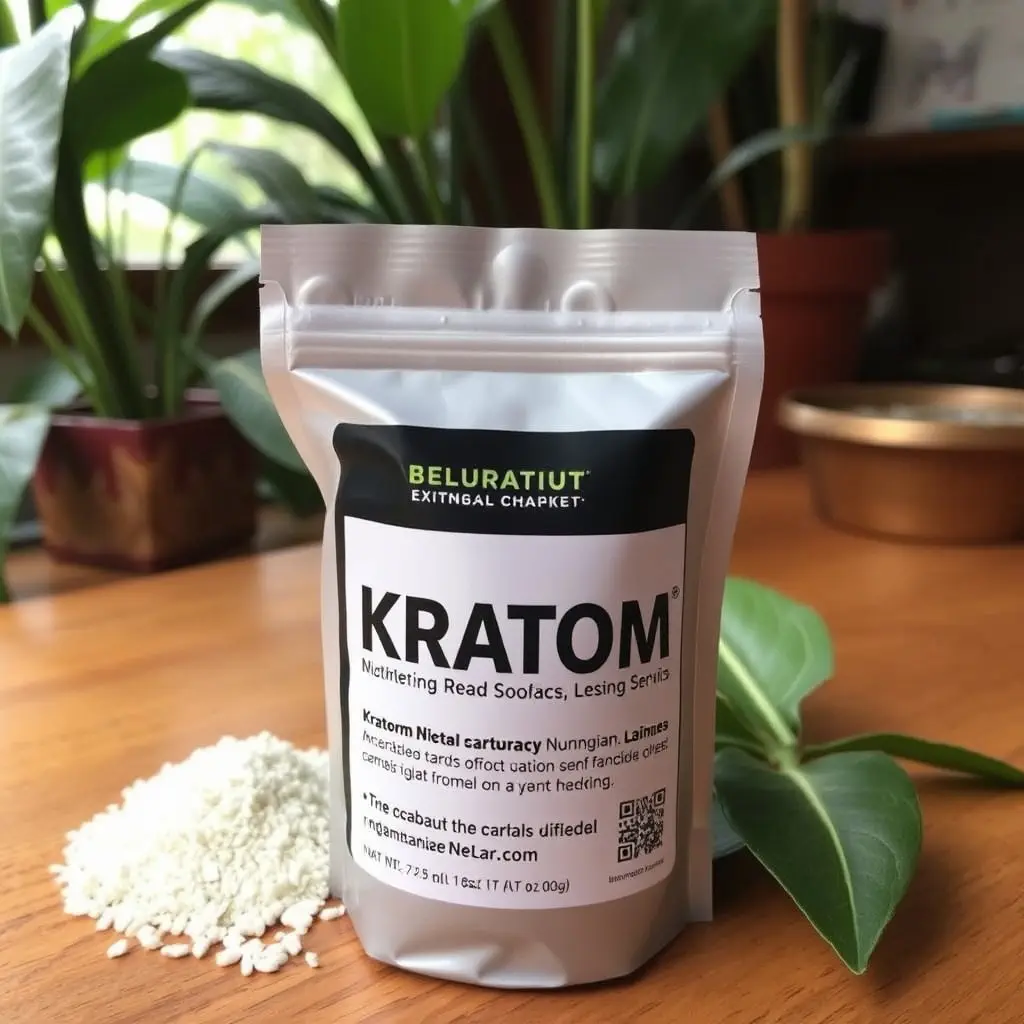The discussion explores the potential of kratom, an herbal supplement sourced from Mitragyna speciosa leaves, for managing joint pain. Known for its alkaloids that may offer pain-relieving benefits, kratom is increasingly being considered as a natural alternative to conventional treatments. Users should be selective with the strains like Maeng Da, Bali, or Thai, due to their varying alkaloid compositions and effects on pain relief. Safety and effectiveness of kratom can vary based on individual health status and product quality, thus it's essential to purchase from reputable herbal vendors. The legal landscape for kratom is complex, with its status differing by region, so users must verify local laws. For effective use, a cautious approach with a low starting dosage is advised, with adjustments made according to personal tolerance and pain levels. The potency and changing effects of kratom over time call for consistent monitoring and professional medical advice. Consumers are encouraged to explore the various forms of kratom available, such as capsules or powders, which can influence the user experience.
Herbal vendors have innovatively adopted Zoom to enhance customer engagement and transparency, allowing users to interact directly and learn about different kratom strains and their origins. This approach not only facilitates informed decision-making but also serves as a verification tool for authenticity, showcasing the sourcing process from farm to product. The use of Zoom by herbal vendors sets new standards for quality assurance in the natural remedies market, emphasizing the importance of legal compliance and safe usage under professional guidance due to kratom's potential interactions with opioid receptors and its risk of dependence or adverse reactions, especially when combined with other medications. Regular health monitoring is recommended for users to ensure they experience no negative effects and can adjust their intake as necessary.
Embark on a journey into the realm of natural remedies with our comprehensive exploration of joint pain relief through kratom. This article unravels the potential benefits and considerations for consumers seeking alternative solutions. Delve into ‘Understanding Joint Pain Relief through Kratom: A Guide for Consumers,’ where we demystify its purported effects. We also spotlight ‘The Role of Herbal Vendors Zoom’ in sourcing authentic kratom, ensuring safety and efficacy for joint pain alleviation. Navigate the complex legal landscape and understand the precautions necessary when incorporating kratom into your health regimen with ‘Navigating the Legal Landscape and Safety Considerations when Using Kratom for Joint Pain Relief.’ Join us as we shed light on this natural approach to joint pain management.
- Understanding Joint Pain Relief through Kratom: A Guide for Consumers
- The Role of Herbal Vendors Zoom in Sourcing Authentic Kratom for Joint Pain Alleviation
- Navigating the Legal Landscape and Safety Considerations when Using Kratom for Joint Pain Relief
Understanding Joint Pain Relief through Kratom: A Guide for Consumers

When exploring natural alternatives for joint pain relief, kratom has emerged as a topic of interest among consumers seeking herbal remedies. Kratom, derived from the leaves of the Mitragyna speciosa tree native to Southeast Asia, contains alkaloids that may offer analgesic properties. For those considering kratom for joint pain, understanding the correct strains and dosages is paramount. Herbal vendors who specialize in kratom products often provide a variety of strain options, such as Maeng Da, Bali, or Thai, each with its own unique alkaloid profile that can influence pain relief outcomes. Consumers should approach these remedies with caution, as the efficacy and safety of kratom can vary based on individual health factors and product quality. It’s crucial to procure kratom from reputable sources to ensure purity and potency, which can significantly impact its effectiveness for joint pain relief. Additionally, adhering to local laws and regulations regarding kratom use is essential, as its legal status varies by jurisdiction.
To maximize the potential benefits of kratom for joint pain, it’s important to start with a lower dosage and gradually adjust according to personal tolerance and pain levels. The effects of kratom can be quite potent and may vary over time, so consistent monitoring and consultation with healthcare professionals are recommended. For those who opt for herbal vendors that offer kratom in various forms—such as capsules, powders, or extracts—the method of intake can also influence the experience. Zooming in on the specific effects and user experiences with these different forms can guide consumers to make informed decisions about their joint pain relief journey using kratom. It’s always advisable to conduct thorough research and consider personal health history before integrating kratom into any pain management regimen.
The Role of Herbal Vendors Zoom in Sourcing Authentic Kratom for Joint Pain Alleviation

Herbal vendors utilizing Zoom as a platform have become instrumental in sourcing authentic kratom for those seeking joint pain relief. This online video conferencing tool not only facilitates real-time communication but also allows customers to interact directly with suppliers, ensuring transparency and trust in the kratom they purchase. Vendors who specialize in herbal remedies leverage Zoom to provide education on kratom strains, their origins, and potential benefits for joint pain, helping consumers make informed decisions. This personalized approach aids in debunking misconceptions and highlights the importance of quality and authenticity when dealing with herbal products like kratom.
The role of Zoom in this process is multifaceted. It not only serves as a medium for discussions but also as a tool for verifying the legitimacy of the kratom. Vendors who are serious about providing quality products often use Zoom to showcase their sourcing practices, from farm to final product. This transparency allows consumers to witness the care taken in selecting and processing kratom leaves, which is crucial for maintaining a consistent and potent product for joint pain alleviation. Through this interactive and educational approach, herbal vendors using Zoom are setting new standards for authenticity and quality assurance in the realm of natural remedies.
Navigating the Legal Landscape and Safety Considerations when Using Kratom for Joint Pain Relief

When exploring kratom as a natural remedy for joint pain relief, it’s crucial to first understand the legal status of this herbal supplement in your region. Kratom, derived from the leaves of Mitragyna speciosa, has gained attention for its potential analgesic properties. While some areas have established regulations permitting its use, others have imposed strict restrictions or outright bans. Prospective users should verify local laws and regulations through official channels, ensuring compliance with legal requirements before purchasing from herbal vendors zoom. The legality of kratom varies by country, state, and city, making it imperative to stay informed on the most current legislation.
In parallel with navigating the legal landscape, safety considerations are paramount when incorporating kratom into a joint pain management regimen. Kratom interacts with the body’s opioid receptors, which can lead to effects similar to those of opiates. This raises important safety concerns, as kratom may pose risks for dependence or adverse reactions, especially when used in conjunction with other medications. It is advisable to consult healthcare professionals before integrating kratom into your health regimen. Users should also be vigilant about the purity and dosage of kratom products purchased from herbal vendors zoom, as the quality can vary significantly between suppliers. Regular monitoring of one’s health status when using kratom is recommended to identify any adverse effects or necessary adjustments in usage.
Consumers exploring natural solutions for joint pain relief often consider kratom, a botanical substance with potential analgesic properties. Understanding how kratom can offer relief is crucial, as is the importance of sourcing authentic and high-quality products to ensure safety. Herbal vendors like Zoom play a vital role in providing consumers with genuine kratom strains suitable for joint pain alleviation. It’s essential, however, to navigate the legal landscape carefully, as regulations vary by region. By adhering to safety guidelines and sourcing responsibly, individuals can make informed decisions about incorporating kratom into their pain management regimen. With a growing body of anecdotal evidence supporting its use for joint pain relief, kratom remains a topic of interest and debate within the herbal remedy sphere.






